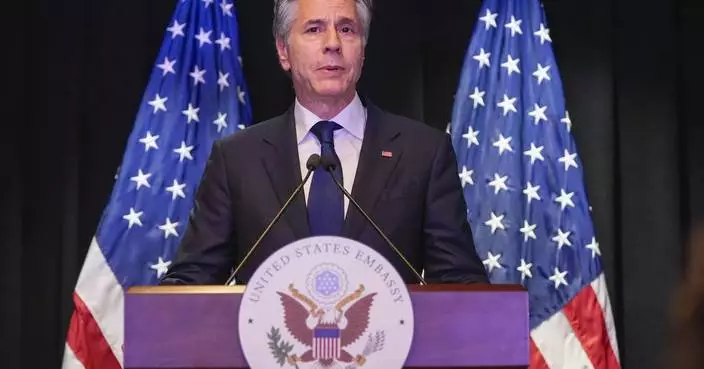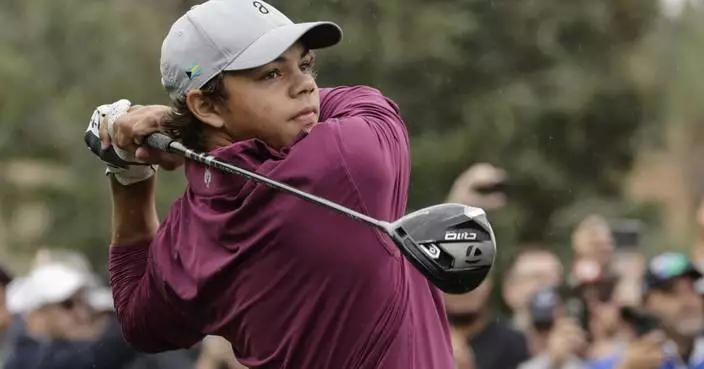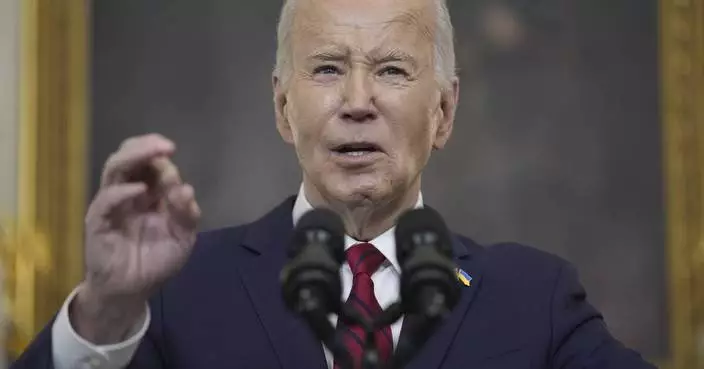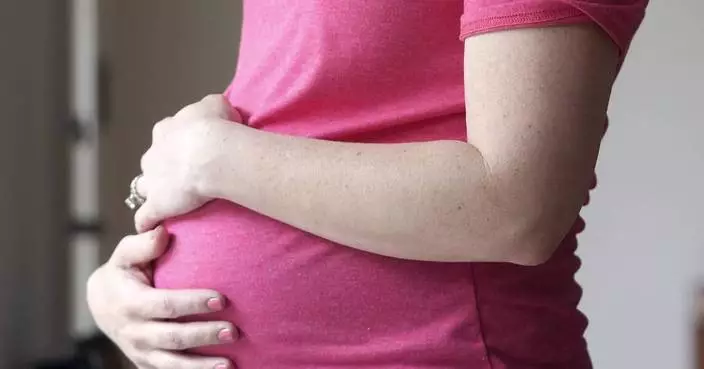An aviation bill Congress is rushing to approve contains a little-noticed section that would give authorities the power to track, intercept and destroy drones they consider a security threat, without needing a judge's approval.
Supporters say law enforcement needs this power to protect Americans from terrorists who are learning how to use drones as deadly weapons.
They point to the Islamic State terrorist group's use of bomb-carrying drones on battlefields in Iraq, and warn that terrorists could go after civilian targets in the United States.
Critics say the provision would give the government unchecked power to decide when drones are a threat. They say the government could use its newfound power to restrict drone-camera news coverage of protests or controversial government facilities, such as the new detention centers for young migrants.
The provision is tucked in a huge bill that provides $1.7 billion in disaster relief and authorizes programs of the Federal Aviation Administration, which regulates drones. The House approved the measure Wednesday by a 398-23 vote, and the Senate is expected pass it on to President Donald Trump's desk in the coming days. The White House signaled support of the drone provision in July.
Sen. Ron Johnson, a Wisconsin Republican, introduced the Preventing Emerging Threats Act this year. It would give the Homeland Security Department and the Justice Department power to develop and deploy a system to spot, track and shoot down drones, as unmanned aircraft are called. Officers would have the authority to hack a drone operator's signal and take control of the device.
The bill was never considered on its own by the full Senate or the House. Instead, in private negotiations that ended last weekend, it was tucked into a "must-pass" piece of FAA legislation.
Homeland Security Secretary Kirstjen Nielsen wrote in a recent op-ed that the threat of drone attacks "is outpacing our ability to respond." She said criminals use drones to smuggle drugs across the border, but worse, terrorists like the Islamic State are deploying them on the battlefield.
"We need to acknowledge that our first and last chance to stop a malicious drone might be during its final approach to a target," she wrote.
Attorney General Jeff Sessions said in a statement this week that the measure "would finally give federal law enforcement the authority we need to counter the use of drones by drug traffickers, terrorists and criminals."
The National Football League's top security executive recently endorsed the bill. The official, Cathy Lanier, a former Washington, D.C., police chief, said the NFL is alarmed by an increase in drone flyovers at stadiums.
Opponents including the American Civil Liberties Union argue that the proposal gives the government unchecked power to track and seize drones without regard for the privacy and free-speech rights of legitimate drone operators. It exempts the government agencies from certain laws, including limits on wiretapping.
The bill provides no oversight or means to question a government decision about what is a "credible threat" and what is an "asset" or "facility" in need of protection when drones are nearby.
News organizations are increasingly using drones. They deploy them to cover natural disasters like the recent flooding from Hurricane Florence and also controversies such as the Trump administration's construction of new camps for migrant children who were separated from their parents at the U.S.-Mexico border.
"Being able to see footage of protests, the size of protests, being able to see facilities like those at the border is useful — those are newsworthy events," said India McKinney, a legislative analyst for the Electronic Frontier Foundation.
Without a specific means to protect First Amendment rights — something not in the bill — "it's entirely feasible to think that the DOJ or DHS could just decide that a drone owned by a news organization provides a credible threat and then destroys the footage," she said.
The National Press Photographers Association has joined in opposing the provision.
"It will chill newsgathering using drones by news organizations and individual journalists," said Mickey Osterreicher, lawyer for the press photographers group.
David Koenig can be reached at http://twitter.com/airlinewriter
KYIV, Ukraine (AP) — A Ukrainian court on Friday ordered the detention of the country’s farm minister in the latest high-profile corruption investigation, while Kyiv security officials assessed how they can recover lost battlefield momentum in the war against Russia.
Ukraine’s High Anti-Corruption Court ruled that Agriculture Minister Oleksandr Solskyi should be held in custody for 60 days, but he was released after paying bail of 75 million hryvnias ($1.77 million), a statement said.
Ukraine’s National Anti-Corruption Bureau suspects Solskyi headed an organized crime group that between 2017 and 2021 unlawfully obtained land worth 291 million hryvnias ($6.85 million) and attempted to obtain other land worth 190 million hryvnias ($4.47 million).
Ukraine is trying to root out corruption that has long dogged the country. A dragnet over the past two years has seen Ukraine’s defense minister, top prosecutor, intelligence chief and other senior officials lose their jobs.
That has caused embarrassment and unease as Ukraine receives tens of billions of dollars in foreign aid to help fight Russia’s army, and the European Union and NATO have demanded widespread anti-graft measures before Kyiv can realize its ambition of joining the blocs.
In Ukraine's capital, doctors and ambulance crews evacuated patients from a children’s hospital on Friday after a video circulated online saying Russia planned to attack it.
Parents hefting bags of clothes, toys and food carried toddlers and led young children from the Kyiv City Children’s Hospital No. 1 on the outskirts of the city. Medics helped them into a fleet of waiting ambulances to be transported to other facilities.
In the video, a security official from Russian ally Belarus alleged that military personnel were based in the hospital. Kyiv city authorities said that the claim was “a lie and provocation.”
Kyiv Mayor Vitali Klitschko said that civic authorities were awaiting an assessment from security services before deciding when it was safe to reopen the hospital.
“We cannot risk the lives of our children,” he said.
Meanwhile, Ukrainian President Volodymyr Zelenskyy was due to hold online talks Friday with the Ukraine Defense Contact Group, which has been the key international organization coordinating the delivery of weapons and other aid to Ukraine.
Zelenskyy said late Thursday that the meeting would discuss how to turn around Ukraine’s fortunes on the battlefield. The Kremlin’s forces have gained an edge over Kyiv’s army in recent months as Ukraine grappled with a shortage of ammunition and troops.
Russia, despite sustaining high losses, has been taking control of small settlements as part of its effort to drive deeper into eastern Ukraine after capturing the city of Avdiivka in February, the U.K. defense ministry said Friday.
It’s been slow going for the Kremlin’s troops in eastern Ukraine and is likely to stay that way, according to the Institute for the Study of War. However, the key hilltop town of Chasiv Yar is vulnerable to the Russian onslaught, which is using glide bombs — powerful Soviet-era weapons that were originally unguided but have been retrofitted with a navigational targeting system — that obliterate targets.
“Russian forces do pose a credible threat of seizing Chasiv Yar, although they may not be able to do so rapidly,” the Washington-based think tank said late Thursday.
It added that Russian commanders are likely seeking to advance as much as possible before the arrival in the coming weeks and months of new U.S. military aid, which was held up for six months by political differences in Congress.
While that U.S. help wasn’t forthcoming, Ukraine’s European partners didn’t pick up the slack, according to German’s Kiel Institute for the World Economy, which tracks Ukraine support.
“The European aid in recent months is nowhere near enough to fill the gap left by the lack of U.S. assistance, particularly in the area of ammunition and artillery shells,” it said in a report Thursday.
Ukraine is making a broad effort to take back the initiative in the war after more than two years of fighting. It plans to manufacture more of its own weapons in the future, and is clamping down on young people avoiding conscription, though it will take time to process and train any new recruits.
Jill Lawless contributed to this report.
Follow AP’s coverage of the war in Ukraine at https://apnews.com/hub/russia-ukraine
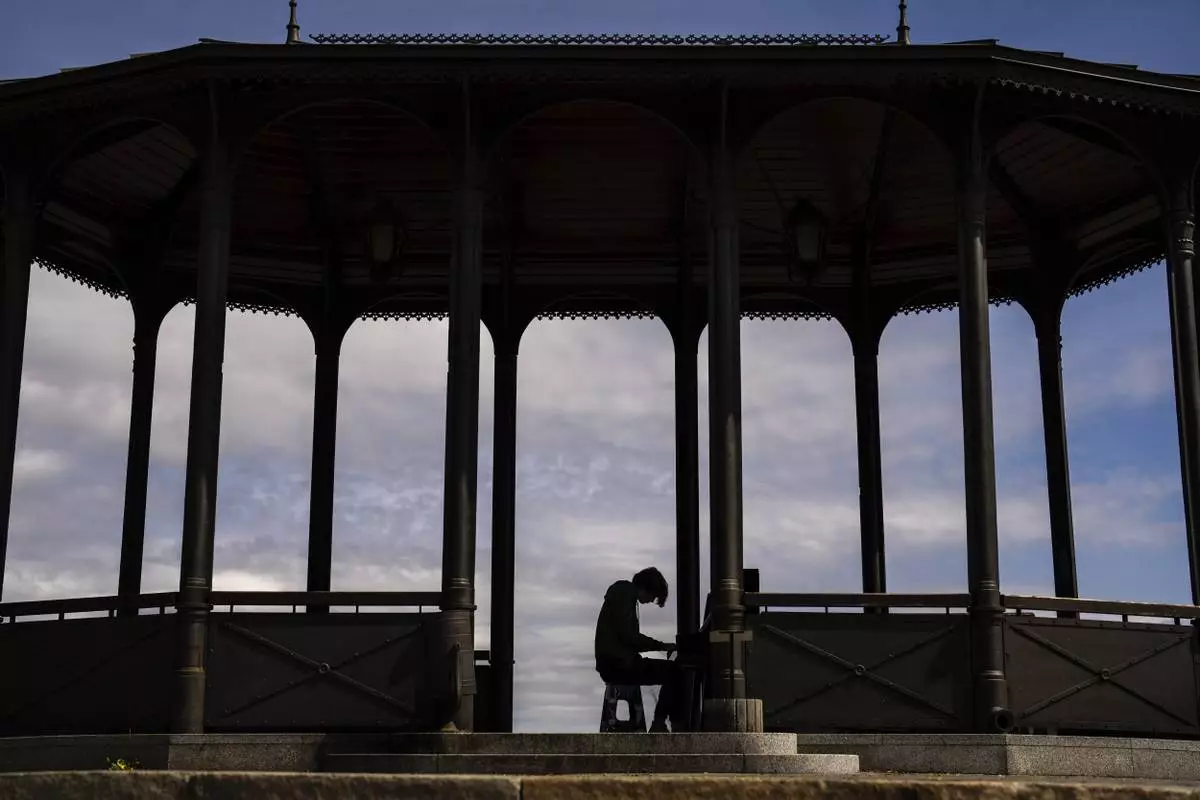
Ukrainian young acting student Gleb Batonskiy plays piano in a public park in Kyiv, Ukraine, Thursday, April 25, 2024. (AP Photo/Francisco Seco)




